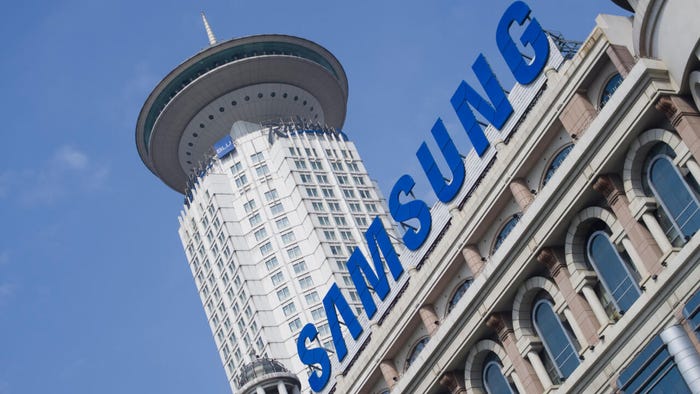AT&T's 'multivendor' open RAN claims smell rotten in Denmark
The CTO of AT&T turns up at the TM Forum's big annual event to defend his deal with Ericsson, but the evidence is poor.

AT&T, it is fair to say, will be served by a jumble of hardware providers following its $14 billion "open" radio access network (RAN) deal with Ericsson, announced in December last year. As well as using some of the new interfaces synonymous with open RAN technology, AT&T also plans a virtual RAN (vRAN) or cloud RAN based on general-purpose compute. Dell is down to provide servers, and Intel the chips inside them. Radios will come from Fujitsu, besides Ericsson.
On the software side, however, this arrangement is largely if not entirely about Ericsson. That didn't stop Jeremy Legg, AT&T's chief technology officer, from parachuting into the TM Forum's well-attended Digital Transformation World event in Copenhagen this week to slam the "single vendor" criticisms aired throughout the industry and champion the "multivendor" software environment its Ericsson deal will cultivate.
"I think the deal has been a little bit misinterpreted that we were going to a single vendor because of the announcement," said Legg during a keynote session on Tuesday. "What we are really trying to do is move to a multivendor environment. And as baseband boxes at the bottom of the RAN get turned into traditional compute – and you look at the layers that are going to sit on top of that in terms of the software, whether it's vRAN or centralized RAN etcetera – then what you are actually doing is opening up the network to lots of different software providers."
Ericsson, though, is the only named supplier of the RAN software that will power the entire national network. Previously, AT&T has used both Ericsson (across two-thirds of its network) and Nokia (the other third). But it is hitting the delete button on Nokia's code and replacing that with Ericsson's technology.
SMO screen
The Swedes, to the evident disgruntlement of the Finns, will also provide the service management and orchestration (SMO) technology – branded the Ericsson Intelligent Automation Platform (EIAP) – linked to AT&T's RAN. A vendor responsible for both would have the opportunity to create "sticky functionality" between them, said Tommi Uitto, the head of Nokia's mobile networks business group, when he met Light Reading at Mobile World Congress this year. It implied that replacing either the SMO or the RAN, rather than both together, would be difficult.
Some telcos have been even more forthright. In a white paper published last year, Vodafone and NTT Docomo complained that critical interfaces between the SMO layer and other parts of the RAN were still not open. Continued use of proprietary interfaces means a telco swapping out its SMO platform must replace its RAN software, too, a source close to interface matters told Light Reading earlier this month.
As the same individual points out, Ericsson also happens to provide the infrastructure platform (platforms are mushrooming in telecom) that usually accompanies its virtual or cloud RAN. This is a strikingly different approach from that of Samsung, which has avoided any involvement in this area and made Wind River its preferred platform, or Nokia, which is abandoning internal efforts and positioning Red Hat as its primary partner.
AT&T has confirmed it will use the cloud-native infrastructure solution from Ericsson that one source in the equipment sector described as something of a black box. This "full stack" brings convenience, but it does not help with the multivendor claims.
Legg up
How, then, does Legg expect to walk the talk about a multivendor software environment? Possibly through a platform (yes, another platform) known as the RAN Intelligent Controller (or RIC), likened to a kind of app store for the network. The idea is that software developers can write applications for the network and have them hosted on a RIC in a telco's systems.
But the RIC that AT&T will use also comes from Ericsson, forming a component of EIAP. And while it should be able to support third-party software through an interface called R1, it caters only to "non-real-time" rApps, as the industry calls them, and not the "near-real-time" xApps that have been a focus for some developers.
The most talked about of those developers by other telcos is probably Cohere Technologies, whose Universal Spectrum Multiplier (USM) xApp is designed to boost the capacity of radios that have already been deployed. Today, Cohere's USM is seemingly not an option for AT&T unless Ericsson decides to work on directly integrating Cohere's technology with its own. But doing this would conceivably undermine Ericsson's efforts to sell more advanced (and more expensive) radios to its customers.
The Swedish company, moreover, appears to have little interest in accommodating xApps. "The functionality of xApps is provided by the RAN itself," it recently told Light Reading by email. "At this point, we don't see benefits of xApps on top of what our RAN is doing at the moment."
Not everyone is convinced xApps will bring advantages that rApps do not. Yet the control loop updates at intervals of more than a second for rApps, while latency falls to between 10 milliseconds and a second for xApps, according to Ericsson. The innovation offered by Cohere is apparently not available in rApps form.
To summarize, AT&T's multivendor open RAN comes with Ericsson's infrastructure platform, Ericsson's SMO and non-real-time RIC technologies and Ericsson's RAN software. In none of these domains has any alternative software vendor been named. At best, it will allow some third-party app developers accounting for a minuscule share of RAN revenues to feature in AT&T's network. As an advertisement for a multivendor software ecosystem, it is hardly ideal.
About the Author(s)
You May Also Like














